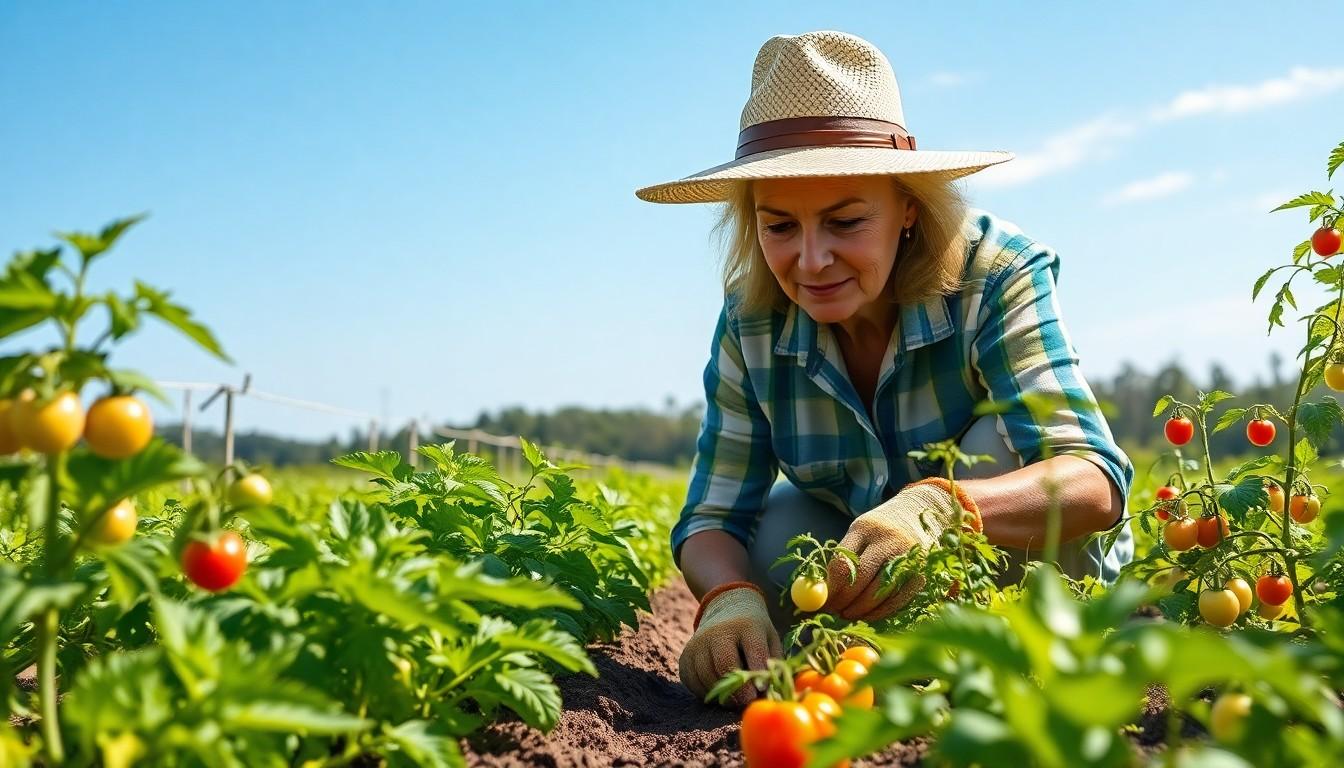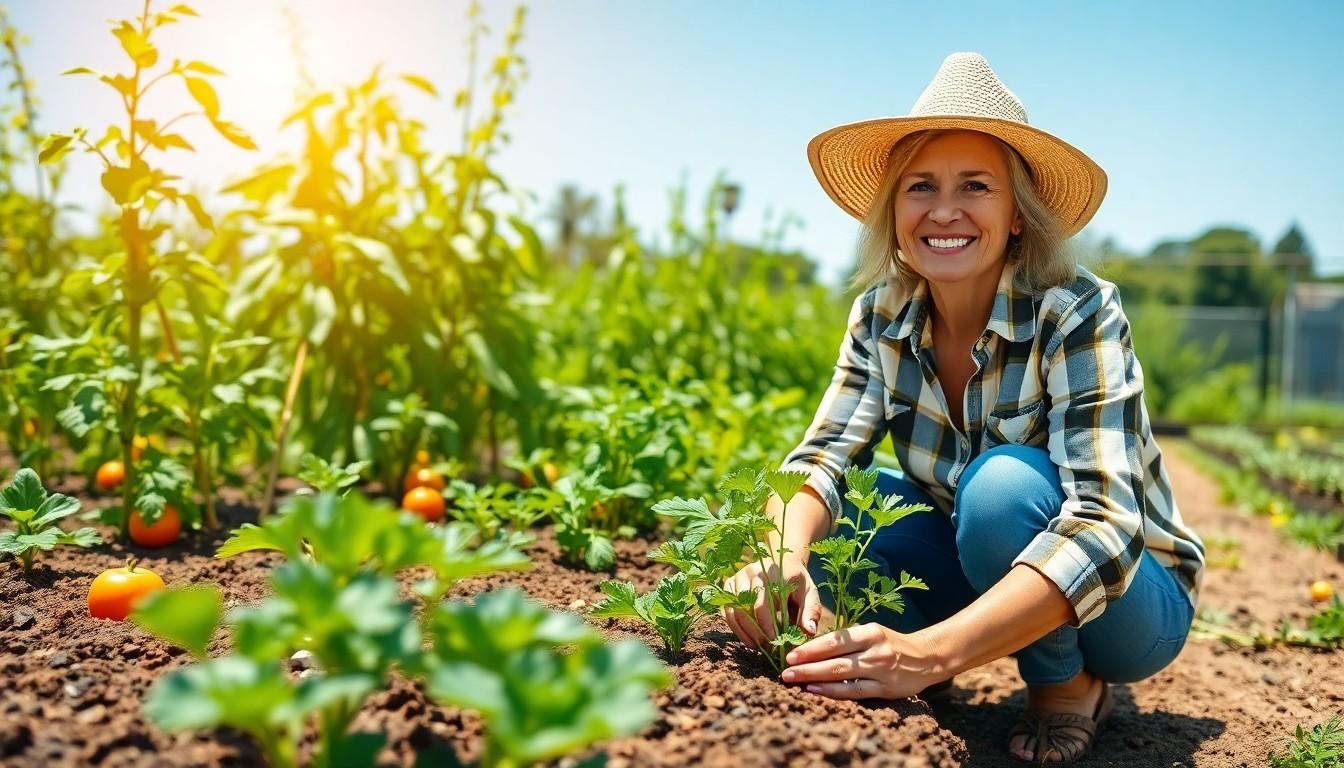North Florida boasts a climate that’s a gardener’s dream, but navigating the seasonal quirks can feel like a game of vegetable roulette. With temperatures that can swing from sultry to surprisingly chilly, knowing what to plant each month can turn a novice into a green-thumbed guru—or at least keep them from growing more weeds than veggies.
Overview of North Florida Vegetable Gardening
North Florida offers a diverse climate that supports a range of vegetables throughout the year. Understanding the unique weather patterns is crucial for successful gardening in this region. Temperatures can fluctuate significantly, impacting planting schedules and growth cycles.
Spring presents an ideal time for sowing cool-season crops. Vegetables like radishes, peas, and spinach thrive during this period. As temperatures rise, transitioning to warm-season crops becomes essential. Options such as tomatoes, peppers, and squash grow well in the summer heat.
Fall serves as another prime opportunity for planting. Many gardeners choose to replant cool-season crops in September and October. Broccoli, carrots, and kale are popular choices to harvest before winter. Additionally, late fall allows for the continued growth of vegetables that can withstand cooler temperatures.
Winter gardening is also feasible with the right strategies. Certain frost-tolerant vegetables, like collard greens and turnips, can endure the chill. Season extension techniques, such as using row covers, might also protect younger plants from frost.
Employing a month-by-month planting calendar ensures effective vegetable management and optimal yields. Gardeners benefit from selecting appropriate crops for each season. Knowledge of soil preparation, pest management, and watering practices further enhances success in North Florida gardens.
Utilizing these insights supports novices and experienced gardeners alike in achieving a bountiful harvest. Understanding North Florida’s gardening potential becomes easier with experience and proper planning.
Monthly Gardening Guide

Each month in North Florida brings unique opportunities and challenges for vegetable gardening. A month-by-month guide enhances understanding of planting timings and care strategies.
January: Planning and Preparation
Planning in January sets the stage for a successful gardening year. Gardeners should assess soil health and determine what vegetables to grow based on their preferences. Consider starting a garden journal to track progress and jot down notes. It’s also an ideal time to order seeds and prepare garden beds for the upcoming planting season.
February: Early Planting
February marks the beginning of early spring planting. Cool-season crops like peas and lettuce thrive in cooler temperatures. Gardeners can also sow seeds indoors for tomatoes and peppers to give them a head start. Regular monitoring of soil moisture is crucial as seedlings emerge.
March: Spring Growth
Spring arrives in March, fostering optimal growth conditions for many vegetables. Broccoli, cabbage, and kale can be directly seeded or transplanted this month. Maintaining proper watering levels ensures healthy growth. Mulching around plants helps retain moisture and suppress weeds.
April: Pest Management
April emphasizes pest management strategies as temperatures rise. Inspect plants regularly for signs of pests such as aphids and caterpillars. Implementing integrated pest management helps protect crops. Beneficial insects, like ladybugs, can assist in controlling pest populations naturally.
May: Peak Planting Season
May signals the peak planting season in North Florida. Warm-season crops, including tomatoes, peppers, and squash, should be planted this month. Regular fertilization enhances plant vigor. Gardeners benefit from knowing local frost dates to avoid surprises.
June: Heat Management Strategies
June introduces higher temperatures, necessitating heat management techniques. Providing shade cloth for sensitive plants can prevent sunburn. Watering early in the morning prevents evaporation, keeping plants hydrated. Mulching also aids in regulating soil temperature.
July: Mid-Summer Care
Mid-summer in July requires diligent care for the garden. Regular harvesting encourages continued production, particularly for squash and cucumbers. Gardeners should check for diseases and pests regularly. Pruning spent flowers improves air circulation around plants.
August: Late Summer Planting
August offers another chance for planting before fall. Crops like beans and fall carrots can be sown now. Starting fall vegetable seeds indoors provides a jump on the growing season. Continue monitoring moisture levels, as the heat lingers.
September: Fall Transition
September ushers in the transition to fall gardening. Cooler temperatures allow for planting lettuce, spinach, and radishes. It’s also a time for soil replenishment through composting. Gardeners should prepare for potential frost by protecting young plants as needed.
October: Harvest Time
Harvesting peaks in October, with many crops ready for collection. Expect tomatoes, peppers, and melons to yield bountifully. Preserving excess produce through canning or freezing extends the enjoyment of the harvest. Late-season pests should still be monitored.
November: Winter Preparation
November signals a time for winter preparation in the garden. Gardeners can plant garlic and shallots for spring harvest. It’s an opportunity to clean up garden beds and compost remaining plant debris. Cover crops can enrich the soil for the next planting season.
December: Off-Season Care
December emphasizes off-season care and reflection. Monitoring soil temperatures helps understand what can grow during winter. Gardeners may begin planning for the next year by reviewing successes and challenges. Utilizing the time for tool maintenance ensures readiness for the upcoming gardening season.
Common Challenges in North Florida Gardening
North Florida gardeners face specific challenges that can affect their success.
Pests and Diseases
Pests frequently target vegetable gardens in this region. Common pests include aphids, whiteflies, and spider mites. These insects can cause considerable damage, so monitoring plants regularly is crucial. Diseases such as powdery mildew and root rot often arise in humid conditions. Implementing integrated pest management strategies remains essential to reduce infestations. Using companion planting can deter pests while promoting healthy growth. Regular inspection and prompt action against symptoms can prevent minor issues from becoming major problems.
Weather Considerations
Weather fluctuations present significant challenges throughout the year. High humidity levels can lead to fungal diseases, impacting plant health. Sudden cold snaps in winter affect sensitive crops, so timing for planting requires careful attention. The summer heat often stresses plants, necessitating consistent watering routines. Rainfall patterns also influence soil moisture levels, affecting root development. Understanding seasonal weather patterns ensures gardeners select appropriate varieties and adjust care techniques accordingly. Adapting practices to manage both excessive rain and drought conditions fosters resilient gardens.
Conclusion
North Florida offers a unique gardening experience throughout the year. By understanding the seasonal nuances and adhering to a month-by-month planting schedule, gardeners can maximize their harvests. The region’s diverse climate supports a wide variety of vegetables, making it essential for gardeners to stay informed about planting times and care techniques.
With the right strategies in place, including pest management and soil preparation, both novice and seasoned gardeners can thrive. Embracing the challenges of North Florida’s gardening climate will lead to fruitful results and a deeper appreciation for the art of vegetable gardening.

